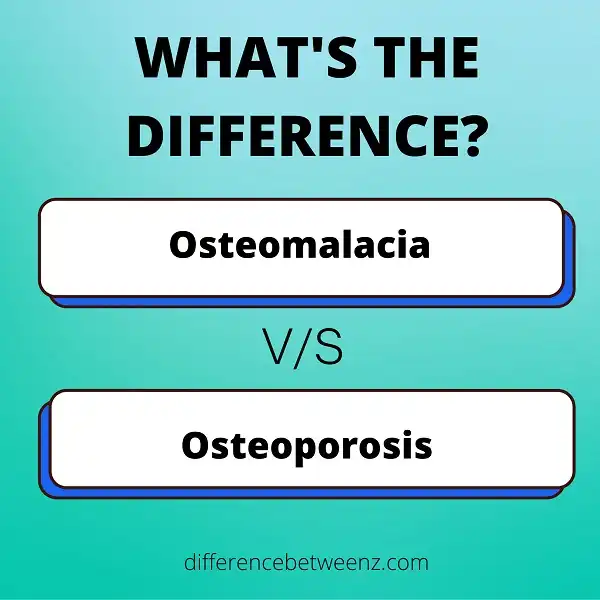Osteomalacia and osteoporosis are both conditions that affect bones, but they are different diseases. Osteomalacia is a condition that results from a lack of vitamin D and causes the bones to become soft and weak. Osteoporosis is a condition that results from the loss of bone density and makes bones more likely to break. Both conditions can be treated with medications and lifestyle changes.
What is Osteomalacia?
Osteomalacia is a condition that results in softening of the bones. It is caused by a deficiency of vitamin D, which is essential for the absorption of calcium. Osteomalacia can lead to bone pain and fragility, and if left untreated, it can progress to osteoporosis. Osteomalacia is most common in adults over the age of 50, although it can occur at any age. Treatment typically involves taking vitamin D supplements and increasing calcium intake. In severe cases, bisphosphonates may be prescribed to help strengthen the bones. With treatment, most people with osteomalacia make a full recovery.
What is Osteoporosis?
Osteoporosis is a condition in which the bones become fragile and susceptible to fractures. It occurs when the body fails to produce new bone tissue or when too much old bone tissue is reabsorbed by the body. Osteoporosis can lead to a loss of bone density and, as a result, an increased risk of fractures. The most common sites for fractures associated with osteoporosis are the hip, spine, and wrist. Osteoporosis is often called a “silent disease” because it typically has no symptoms until a fracture occurs.
Osteoporosis is most common in older adults, but it can occur at any age. It is more common in women than men and in people of Caucasian and Asian descent. There are several risk factors for osteoporosis, including family history, low body weight, smoking, and excessive alcohol consumption. Treatment for osteoporosis typically involves lifestyle changes, such as exercising and eating a healthy diet, as well as medication.
Difference between Osteomalacia and Osteoporosis
Osteomalacia and Osteoporosis are two different conditions that affect the bones. Osteomalacia is a condition where the bones become weak and soft due to a lack of vitamin D or calcium. Osteoporosis is a condition where the bones become thin and fragile due to a loss of bone density. Osteoporosis is more common in women after menopause, while Osteomalacia is more common in people who have a diet lacking in vitamin D or calcium. Both conditions can lead to an increased risk of fractures. Treatment for Osteomalacia typically involves taking supplements of vitamin D or calcium. Treatment for Osteoporosis typically involves medications that help to increase bone density, such as bisphosphonates.
Conclusion
The two medications, Paxil and Prozac, are both selective serotonin reuptake inhibitors (SSRIs) but they work in different ways. Paxil is a short-acting SSRI that blocks the serotonin transporter protein from removing serotonin from the synaptic cleft. This increases the amount of serotonin available to bind to postsynaptic receptors. Prozac is a long-acting SSRI that binds irreversibly to the serotonin transporter protein and inhibits its function.


